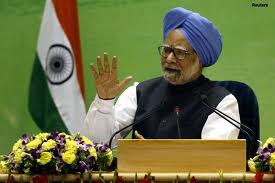
New Delhi, June 25: As G-20 countries worked on steps to tackle black money, Prime Minister Manmohan Singh has said it is a problem but no "magic solutions" were available to deal with menace.
"The problem is there but there are no magic solutions available. I think it is going to be a slow process," Singh told reporters accompanying him on his return home after his eight-day foreign tour.
The Prime Minister's remark came when he was asked whether the black money issue has become irrelevant for the Group of Developed and Developing countries (G-20) or any improvement was there in dealing with the problem.
"It is too early to say one way or the other," he said. The just concluded G-20 Summit at Los Cabos in Mexico welcomed the efforts to enhance interagency cooperation to tackle illicit financial flows.
In its communique, the G-20 said it supported the renewal of the Financial Action Task Force (FATF) mandate, thereby sustaining global efforts to combat money laundering.
In the tax area, the G-20 leaders including Prime Minister Singh reiterated their commitment to strengthen transparency and comprehensive exchange of information.
The 14-page document also called on relevant stakeholders to play an active role in fighting corruption, saying graft impeded economic growth, threatened the integrity of markets, undermined fair competition and undermined the rule of law.
Global Financial Integrity (GFI), a US NGO, praised G-20 leaders today for prominently focusing on the issue of illicit financial flows and committing to move toward the automatic exchange of tax information.
G-20 leaders have committed "to lead by example in implementing" the practice of automatic tax information exchange, and called upon other "countries to join this growing practice as appropriate," a move lauded by GFI as a major step in the right direction.
Corruption, crime, and tax evasion in the form of illicit financial outflows cost the developing world US$1 trillion per year, according to GFI research.
"We are thrilled to see the G-20 commit to adopting a standardized system of automatic tax information exchange," said GFI Director Raymond Baker. "Automatic information exchange will go a long way towards curtailing tax evasion."





Comments
Add new comment